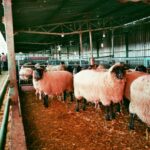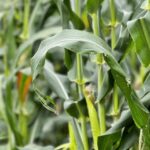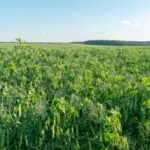Agriculture is at the heart of feeding the world’s growing population, and protecting crops from pests, diseases, and environmental threats is essential to ensure maximum yield. As technology continues to advance, modern equipment has emerged as a game-changer in improving crop protection. These innovative tools not only enhance efficiency but also promote sustainability and reduce environmental impact. Here’s how you can elevate your crop protection methods with cutting-edge equipment.
1. Adopt Precision Sprayers for Targeted Applications
Traditional spraying methods often lead to overuse of chemicals, wasting resources and harming the environment. Precision sprayers equipped with GPS and sensor technology enable farmers to target specific areas with the exact amount of pesticides or herbicides required. This reduces chemical runoff, lowers costs, and ensures better pest control.
2. Use Drones for Monitoring and Application
Agricultural drones have revolutionized crop protection by offering aerial views of fields for monitoring crop health. Equipped with multispectral cameras, drones can detect early signs of stress caused by pests or diseases. Additionally, drones can be used to spray crops, especially in hard-to-reach areas, ensuring uniform coverage while saving time.
3. Leverage Automated Weeders
Weeds compete with crops for nutrients, water, and sunlight. Automated weeders use advanced technology such as AI and machine learning to identify and eliminate weeds without damaging crops. By targeting weeds precisely, these machines reduce the need for chemical herbicides, contributing to eco-friendly farming practices.
4. Invest in Soil Moisture Sensors
Soil health is a critical component of crop protection. Overwatering or underwatering can weaken plants and make them susceptible to pests and diseases. Soil moisture sensors provide real-time data on soil conditions, helping farmers optimize irrigation and maintain healthy crops.
5. Implement Integrated Pest Management (IPM) Tools
Modern IPM tools, such as pheromone traps and biological control agents, help farmers manage pests effectively without relying solely on chemical solutions. When combined with modern equipment like precision sprayers, these tools can significantly enhance pest control strategies while preserving biodiversity.
6. Consider Autonomous Robots for Labor-Intensive Tasks
Labor shortages in agriculture are a growing concern. Autonomous robots designed for tasks like planting, weeding, and harvesting can relieve some of the pressure. These machines work efficiently, reducing crop damage and ensuring timely interventions against pests and diseases.
7. Utilize Data Analytics and Smart Farming Platforms
Modern farming equipment often integrates with data analytics platforms that collect and analyze information about crop health, soil conditions, and weather patterns. This data-driven approach helps farmers make informed decisions about when and how to protect their crops, optimizing resource use and minimizing risks.
8. Explore Eco-Friendly Solutions
With a growing emphasis on sustainability, eco-friendly crop protection methods are gaining traction. Equipment designed for applying organic pesticides or introducing beneficial insects can help farmers protect crops without harming the environment.
Enhancing crop protection methods with modern equipment is no longer a luxury—it’s a necessity. From precision sprayers and drones to automated weeders and data-driven platforms, these innovations empower farmers to safeguard their crops more effectively while promoting sustainability. By adopting these advanced tools, farmers can ensure healthier yields, reduce costs, and contribute to a more sustainable future for agriculture.
Join 'Farmers Mag' WhatsApp Channel
Get the latest Farming news and tips delivered straight to your WhatsApp
CLICK HERE TO JOIN






